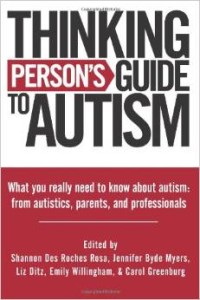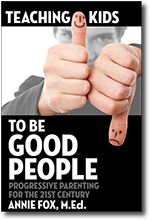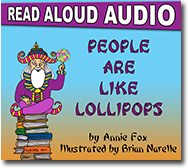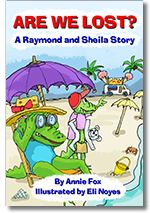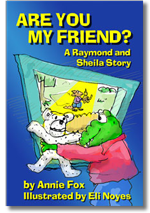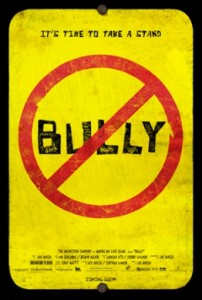 In one of the opening school scenes of the new documentary Bully, a kid with a shaken expression and an ice pack on his head is approached by his school principal who asks, “Oh, what happened to you?” To which the kid replies, “Johnny shoved my head against a nail.”
In one of the opening school scenes of the new documentary Bully, a kid with a shaken expression and an ice pack on his head is approached by his school principal who asks, “Oh, what happened to you?” To which the kid replies, “Johnny shoved my head against a nail.”
I realize school principals see and hear a lot from students during a typical day and much of it is innocuous. As school administrators, they have to be able to differentiate between ‘drama’ vs the real stuff or they’d never make it to 3rd period with their sanity in tact. But an upset child with an ice pack requires attention, so the principal examines the back of the kid’s head and blithely reports, ‘Well, I don’t see a hole.”
That was a tip off that there wasn’t going to be a whole lot of empathy from this administrator. In fact, I was half-expecting she’d ask, “And what did you do to make Johnny so mad?” Instead she shooed the kid off to wherever. Another bullying incident swept aside.
That frustrated me. In fact, the whole audience seemed frustrated by a lot of what we saw in Bully. Not that the scenes with the victims weren’t compelling. Oh they were! I winced, I hid my eyes, I cried. But mostly, my fellow-movie goers and I sat incredulous at the consistent insensitivity of folks who are responsible for the safety and well-being of the students in their care.
Which brings up the scenes of violence on the school bus. Truthfully, I’ve seen much worse filmed by security cameras on school buses. But the bus footage in Bully was made by the filmmakers. They were right there, witnessing a child (Alex) being pushed, hit, shoved, choked, and stabbed with a pencil on numerous occasions. I watch Nature documentaries and I understand that when the lion is hunting the gazelle the filmmakers do not interfere with the ‘natural order’ of things. If the prey gets caught, the camera keeps rolling. But we’re talking about people standing by and watching while a child is being hurt. The film crew continued filming for the benefit of their movie. That’s repugnant. At one point, it must have been too much for them because they put up an inter title saying “Because the violence was escalating and we were concerned for Alex’s safety, we showed the footage to his parents and the school administration.”
What the hell took them so long?! Standing back and filming this cruelty felt like a major betrayal to Alex and his parents, who trusted the filmmakers and opened themselves to them . Where were they when Alex needed help? Apparently more concerned about their movie than the child.
The film had its moments. Who could not be moved by a memorial service for a victim of bullying? Or by a parent choking on her broken heart as she describes the angelic child who was her son had until she found him hanging from a rope in the closet? But these scenes do not translate into change. And that’s why I’m frustrated. That’s why I’ve had it with feel good rallies, candle-light vigils, t-shirts, plastic bracelets and balloon releases.
I wanted more from this film. It was so hyped after an online petition to get the rating changed from R to PG-13 went viral. Hell, I signed it along with 500,000 other people because we felt so strongly that it needed to be seen by as many kids as possible. All of us were hopeful that this film would add something new to the search for solutions. But the film showed absolutely no evidence that any school is doing anything to teach students that cruelty is unacceptable. And yet there are plenty of schools doing the right thing. Schools where administrators, teachers, counselors, parents and students work together to create an accepting school culture– one that does not tolerate harassment. Some of these schools changed themselves after a tragedy. They took responsibility for what happened in their midst and they learned how to become a more caring place. Other schools have never experienced a student being driven to suicide by bullying, but they work proactively on this issue every day, so it won’t happen there.
Aside from the courageous leadership and determination of the parents of two bully-cide victims in the film, there wasn’t a lot to feel inspired by here. And I wanted to feel inspired. All of us who care about kids need to feel inspired and motivated, otherwise we might as well just join the chorus of those who say “Kids will be kids and there’s nothing we can do about our students’ behavior. Let them work it out themselves.” By not providing a look at a positive role model school, it felt like the filmmakers had no hope to offer.
Look, I’m grateful that this film was made. I applaud the filmmakers for creating a free teacher’s guide. I fervently hope that schools everywhere are screening Bully and that follow-up discussions with students and teachers are ongoing. But this isn’t like the early days of the AIDS epidemic. We know a lot about bullying. We know what kinds of environments help it thrive and we know what it takes to teach kids to treat each other with respect. The challenge, it seems, is showing the leadership at school and at home, to consistently walk the walk.



